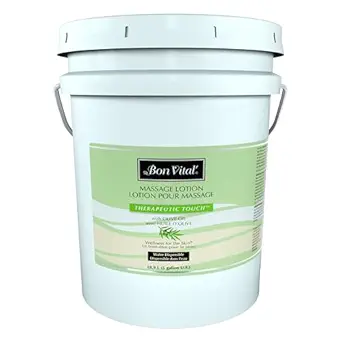Myths of Massage Therapy ...
lactic acid, cancer, toxins, and other myths!
Some of the most common myths of massage therapy involve the physiological changes to our bodies after a bodywork session, and what negative and/or positive results it can bring.
A myth is described as an untrue event, idea or story that is often used to justify a situation.
Over the years, as massage therapy has grown in popularity, some ideas have become a part of the belief system of the general public of what the therapy does or does not do to our bodies.
Some ideas or myths are common and many therapists from different countries believe them, and share them with clients, friends and family. Other myths may be local, within a country or a part of what is taught at a local school.
Here are some of the most common myths of massage:
- Lactic acid causes Delayed Onset Muscle Soreness, and massage therapy can eliminate lactic acid from muscles.
This use to be a very common belief.
However, studies now show that blood circulation removes lactic acid from muscles, and massage does help to improve blood circulation
2. Massage eliminates toxins from muscles
"Toxins" is a popular subject in natural healthcare.
However, this is one big myth.
The word "toxins" is hardly ever used correctly, and it has become a common word relating to things that are bad or unhealthy for the body.
Whatever "toxins" are, it is highly unlikely that massage therapy can push the "bad crap" out of the muscles!
3. Drink lots of water after massage to flush toxins out!
Along these same lines about myths of massage and toxins, there is a belief that massage can release toxins into the body system, and drinking water flushes them out.
Actually, if a client had toxins in their body, it would be a health crisis issue. The client would definitely know there was a serious problem and be headed to the ER!
If someone had toxins in their blood, drinking lots of water would not "flush" them. It's always great to offer water to clients, but NOT on the premise of flushing out toxins!
Some massage professionals encourage clients to drink water as they believe the client gets dehydrated with massage therapy. This is not likely, unless massage and/or other services are offered in a very hot sauna room!
Many other things can dehydrate the human body, like sweating, or excess urination or diarrhea from a medical problem. However, massage is very unlikely to make a person dehydrated.
4. Massage can eliminate cellulite
This is a common treatment in salons and spas.
Plain and simple...Cellulite is FAT! And how wonderful it would be to get rid of fat by having massage! But, the hard facts are that the only way to get rid of it is by exercising and by eating less!
Yes, some cellulite massage treatments may help to reduce the appearance of cellulite, but it won't take it away!

5. People with cancer or those who have had cancer in the past, cannot get massage
This is definitely one of the common myths of massage that started long ago, before it was proven that cancer cells could not be spread through increased blood or lymphatic system circulation.
Scientists now know cancer is an immune system malfunction, and
cells metastasize to certain organs that have a natural attraction for
that particular type of cancer.
Or, you may want to read more about oncology massage, what instructors teach massage therapists, and how therapy is provided for those who have cancer.
Research has also been studied regarding the benefits of massage for breast cancer patients.
Massage therapy does not prove to move cancer cells, just as exercise would not spread the cells throughout the body. However, most massage therapy professionals use a waiver form with clients who have advanced, metastasized cancer.
6. Deep massage must be painful to be effective
A deep tissue massage can be therapeutic, without causing extreme pain to the client.
As a matter of fact, deepness is subjective. What is deep massage to one person, may seem light to another. In fact, most people believe if they feel pain, they are getting deep tissue, and for some, light massage is the most helpful treatment.
7. Avoid Massage during the First Trimester of Pregnancy
For years, we have heard that you should not give pregnancy massage to women during the first trimester.
Many women don't know they are even pregnant until they are 10-12 weeks, and by that time might have already had many massages.
Really, massage is no harder than most other activities or exercise.
When discussing common myths about massage therapy with clients, be honest about what massage can and can't do. Acknowledge that not all claims about massage are supported by strong scientific evidence and that it's okay to admit when you don't know the answer.
Emphasize that while some massage techniques may be more effective than others, the goal is to find what works best for each individual client, not to force a particular approach.
Here's a more detailed breakdown:
1. Addressing the "Pain = Effectiveness" Myth:
- Truth:Massage should not be painful, and some types of massage (like lymphatic drainage) can be very effective even with light pressure.
- Explanation:Explain that deep tissue massage can be effective, but it doesn't necessarily mean "painful." Focus on communication and finding the right pressure for the client's comfort.
- Example:"Some people believe deep tissue must hurt to be effective. While deeper work can be beneficial, it should never cause pain. We'll work together to find the pressure that's right for you and your body."
2. Addressing the "Detoxification" Myth:
- Truth: Massage does not force toxins out of the body.
- Explanation: Explain that the pressure used during massage is not strong enough to squeeze toxins out and release them into the bloodstream.
- Example: "It's a common belief that massage detoxifies the body, but that's not accurate. The pressure used during massage is not designed to force toxins out of the muscles."
3. Addressing the "Massage Only for Relaxation" Myth:
- Truth:Massage has many therapeutic benefits beyond relaxation, including pain relief, improved mobility, and reduced stress.
- Explanation:Explain that massage can be a valuable tool for managing pain, improving circulation, and reducing stress, not just a luxury treatment.
- Example:"While massage is great for relaxation, it also has many other benefits. It can help with pain relief, improve mobility, and even reduce stress."
4. Addressing the "Effects are Temporary" Myth:
- Truth:Massage can have lasting effects on the body, helping to retrain muscle memory and reduce long-term tension.
- Explanation:Explain that massage can help release tension, reduce pain, and improve range of motion, and that regular sessions can lead to long-term benefits.
- Example:"Some people believe the effects of massage are temporary, but that's not always true. Massage can help retrain the body's muscle memory and lead to long-term pain relief."
5. Emphasize Communication and Honesty:
- Truth:Be honest about what you know and what you don't, and be willing to discuss the limitations of massage therapy.
- Explanation:Clients will appreciate your honesty and trust you more if you are upfront about what massage can and cannot do.
- Example:"We're still learning about how massage works, and some things are not fully understood. I'll always be honest with you about what I know and what I don't, and I'm happy to discuss the limitations of massage therapy."
Myths of massage therapy can cause negative perceptions of what massage is, and the positive impact it can have on our health, and being well informed about the true benefits of massage therapy is important for those who work in the profession, and those who seek massage and bodywork services.
Go back to Massage Education Guide Homepage




New! Comments
Have your say about what you just read! Leave me a comment in the box below.